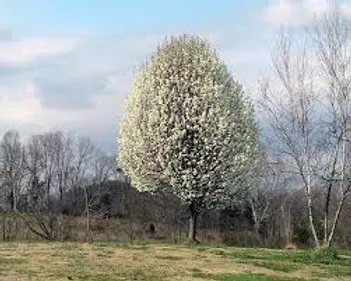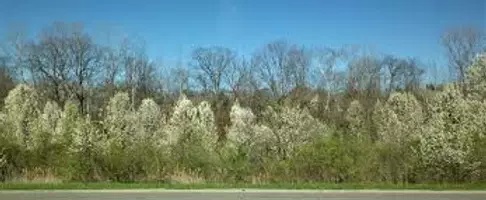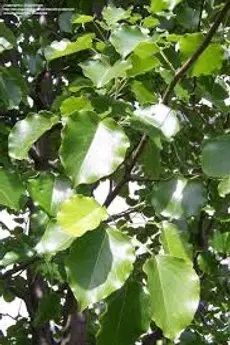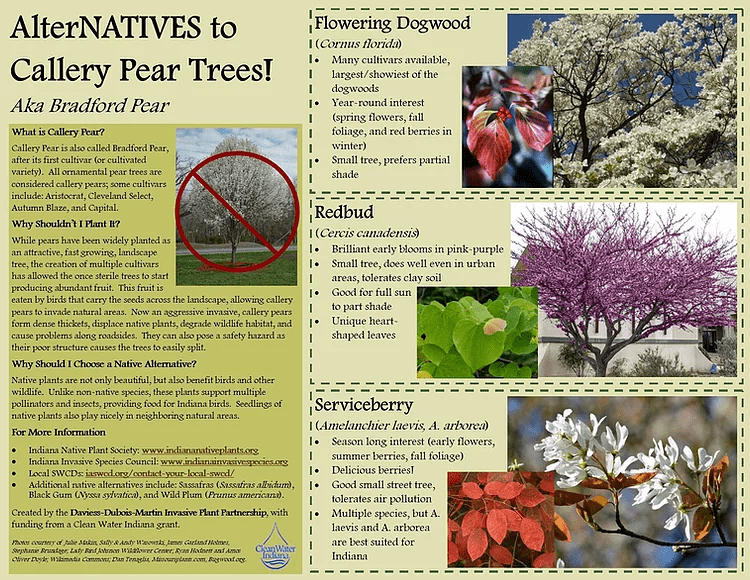Callery (Bradford) Flowering Pear Trees: An invasive threat and a physical risk
Pyrus calleryana ‘Bradford’, produce sterile fruits because they do not self-pollinate. They have been widely planted throughout the United States since the early 1900s as an ornamental. However, the Bradford pear cultivar, other pyrus calleryana cultivars and pyrus betulifolia or Asian pear, can hybridize and produce fertile fruit. In addition to this, fertile pear varieties are commonly used as the rootstock when grafting trees in tree nurseries. If the grafted crown is damaged the fertile rootstock can them dominate, producing fertile fruit. These factors and others may have contributed to the trees seeding out into natural areas and becoming an invasive problem. They do not create a problem in your yard but because of your tree, they create problems in natural areas and in recently disturbed areas.



Callery pear trees are structurally weak. Many people love them because they are perfectly symmetrical and grow into a beautiful shape.
Seriously… they have a lifespan of only about 15-25 years and will usually die as a result of wind, ice, snow or even rain making their branches too heavy. They usually start having issues of splitting off of significant sections of branches from the trunk after 10-15 years as the tree gets bigger and heavier. Large sections of the tree splitting off can cause property damage as the tree gets larger.
We’ve all seen these trees cracked in half after a storm.
There are risks to having a Callery pear tree on your property. Since the tree is structurally weak, sections of the tree may break off and fall during storms, winds, heavy snowfall, etc. What will it damage when it falls? Will someone be under it when it falls?
The longer you wait to remove the tree, the more expensive it will be to remove it because of the increased size.
Callery Pear Trees (aka Bradford Pear) are invasive to our natural woodlands and forests. They damage the eco-system and will permanently change the area as they alter what trees grow where, what birds and wildlife can exist, and the diversity of the eco-system.
Do not plant Callery Pear trees.

